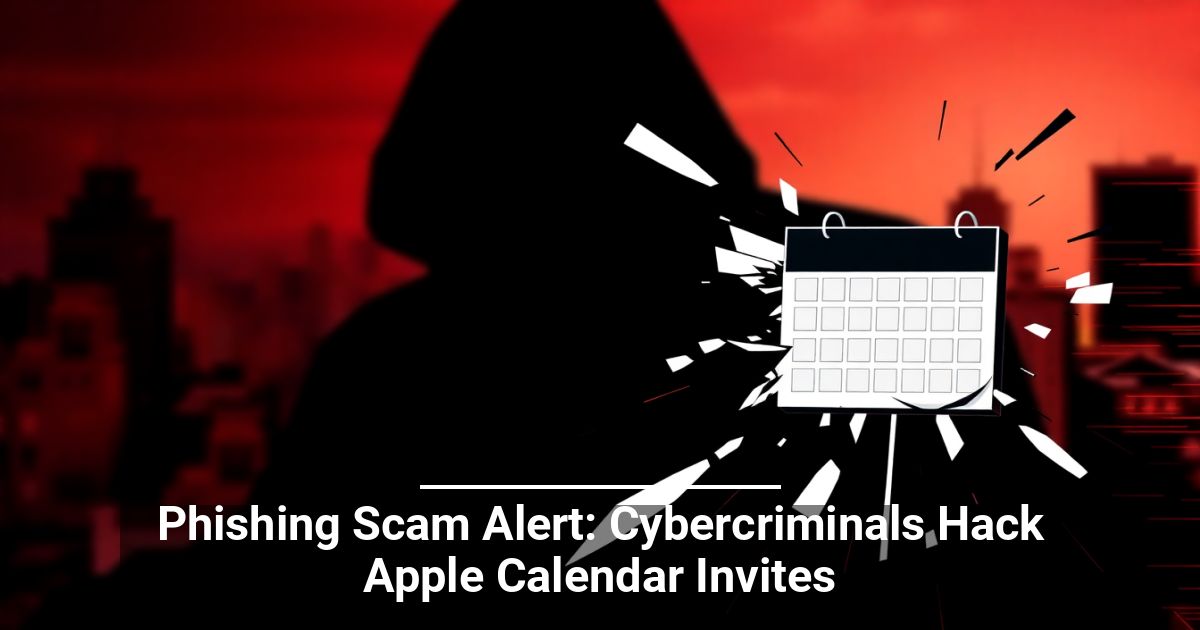 What would you do if a single digital calendar invite could jeopardize your entire establishment? A phishing scam in Apple Calendar invites is on the rise, and it's as sneaky as it is dangerous. Keep reading to learn more.
What would you do if a single digital calendar invite could jeopardize your entire establishment? A phishing scam in Apple Calendar invites is on the rise, and it's as sneaky as it is dangerous. Keep reading to learn more.
What Is Phishing?
Phishing is a cyberattack that uses digital messages to trick you into giving away sensitive information. To earn your trust and get your defenses down, scammers will often pose as a bank representative, online service, well-known company, or any other reputable entity.
These messages also manipulate the victim's actions by creating a sense of urgency. For example, they might claim your account is compromised or that you've missed a recent payment.
Apple Users Should Stay Extra Vigilant
The biggest and most terrifying difference between the phishing scam in Apple Calendar invites and traditional email scams is the delivery method. Since these messages come from Apple's own infrastructure, they gain instant credibility, making it doubly hard for spam filters and anti-ransomware tools to flag them as malicious.
If your company uses emails as a common method of communication, stay on the lookout for unusual messages with the "noreply@email.apple.com" address. These have passed critical checks, such as DKIM, DMARC, and SPF, which makes them appear like a legitimate Apple email.
Breaking Down the iCloud Calendar Invite Phishing Attacks
An informed and vigilant team serves as your first line of defense against these cybersecurity threats. Here's how the scam works:
- Creating the lure: The scammer inserts the message into the "Notes" field of a Calendar invite. It warns the victim that they received a charge on PayPal and further urges them to call a number to resolve it.
- Proliferation: Unfortunately, it's all too easy to use group mail lists and multiply the scam's reach. Since Microsoft uses the Sender Rewriting Scheme to prevent forged sender addresses, the message looks legitimate at first glance.
- Taking the bait: When the victim makes the fatal mistake of dialing the number, the attackers directly try to influence them into downloading malicious remote access tools.
- A successful breach: At the pretense of "issuing a refund," the scammers will connect to the victim's system and steal data, insert malware, or even transfer funds.
Staying One Step Ahead of Cybersecurity Threats
Why wait for a cybersecurity incident that ruins your company's reputation? Fostering a culture of vigilance is an excellent start, but there are more ways you can bolster your defenses:
- Implement multi-factor authentication (MFA): When the worst-case scenario happens, and cybercriminals manage to steal login credentials, they will face another layer of security.
- Update your systems: Enable automatic updates across your devices, so you never miss critical patches.
- Invest in third-party defenses: Look for reputable ransomware protection that monitors for malicious links in real time and sends spam notifications.
This recent phishing scam in Apple Calendar invites should serve as a warning to companies that no platform is completely foolproof. Apple has yet to publicly address this issue, and the burden falls on users to create their own safety measures.

 (540) 635-7064
(540) 635-7064 